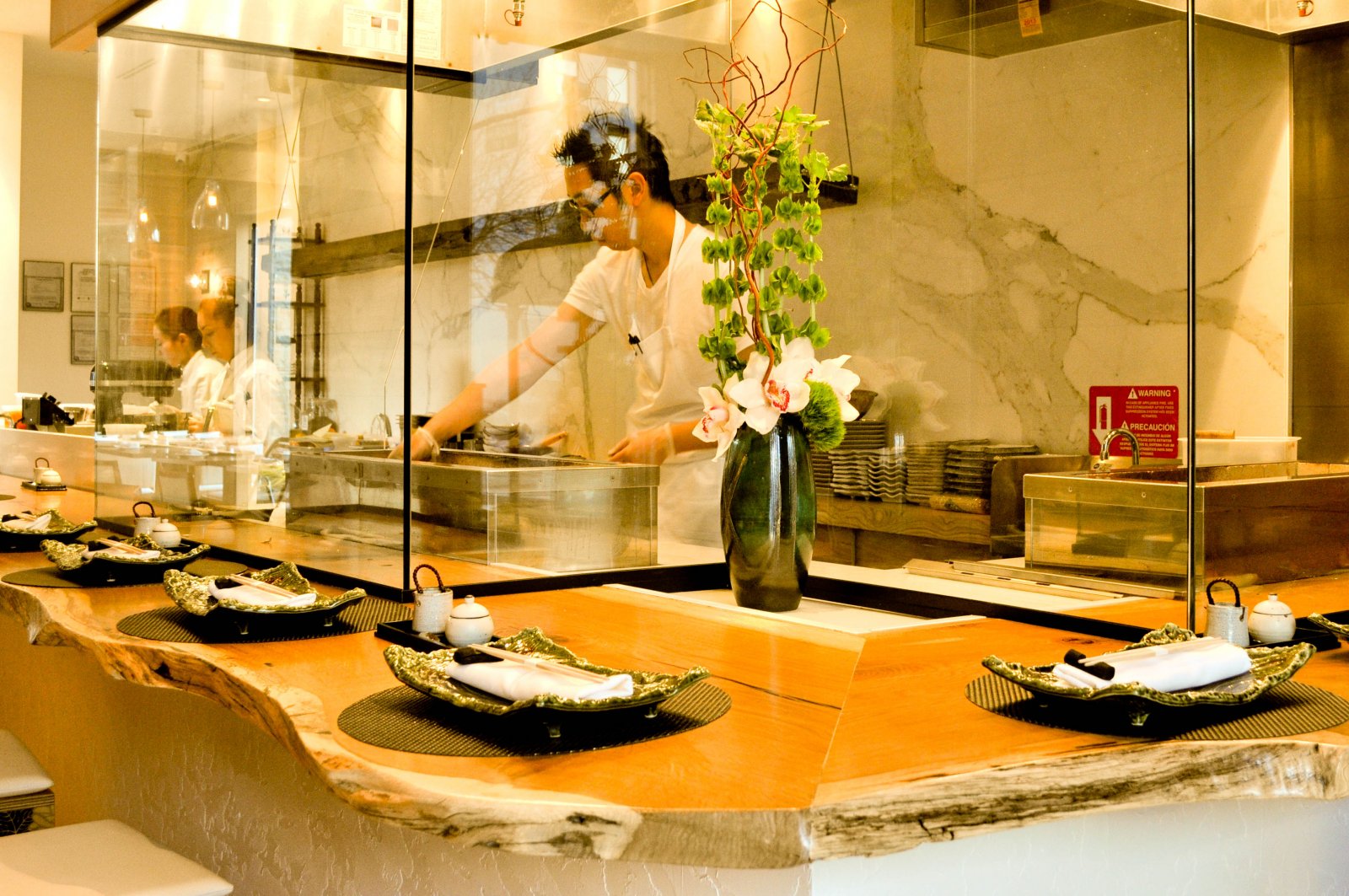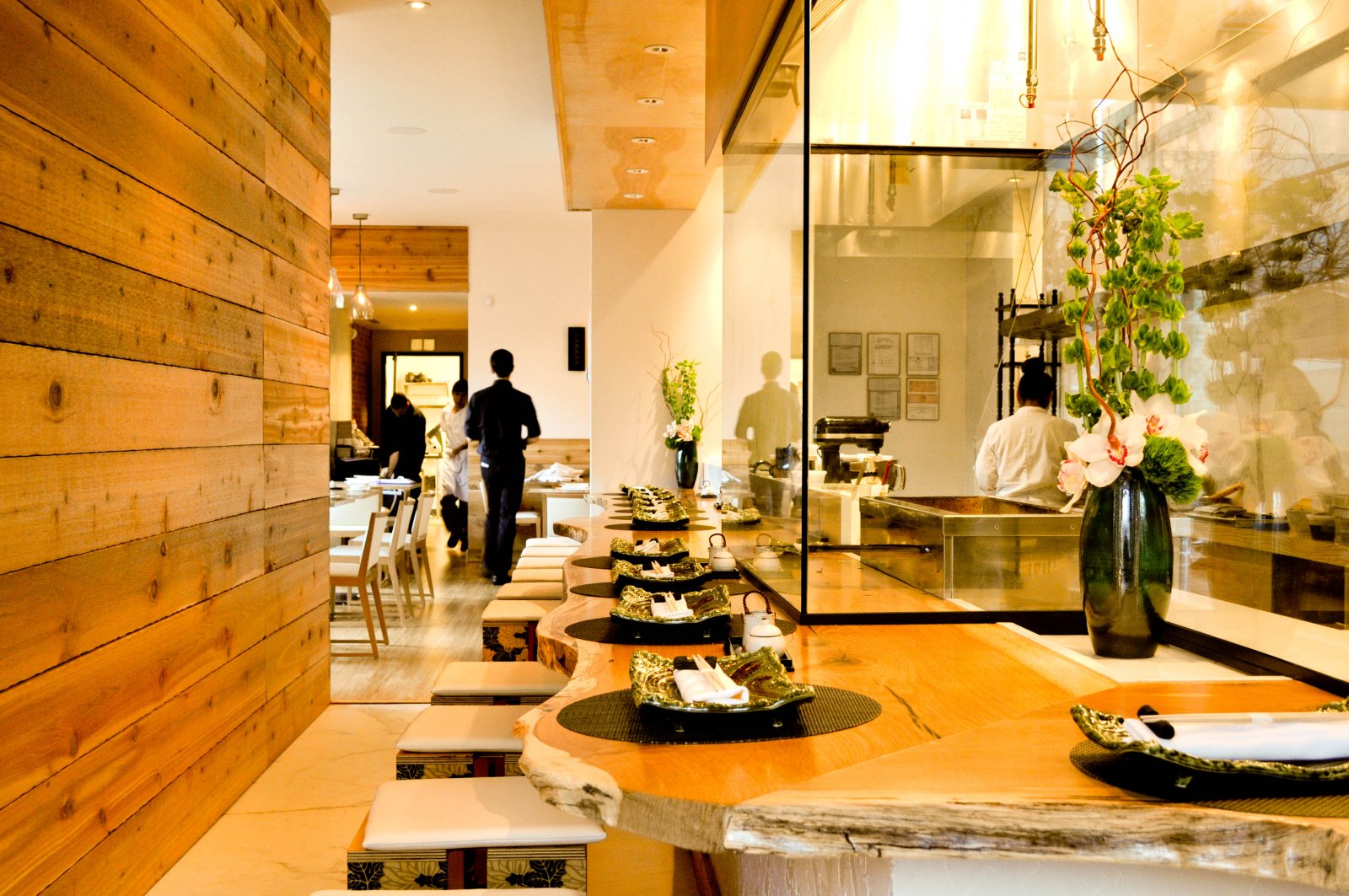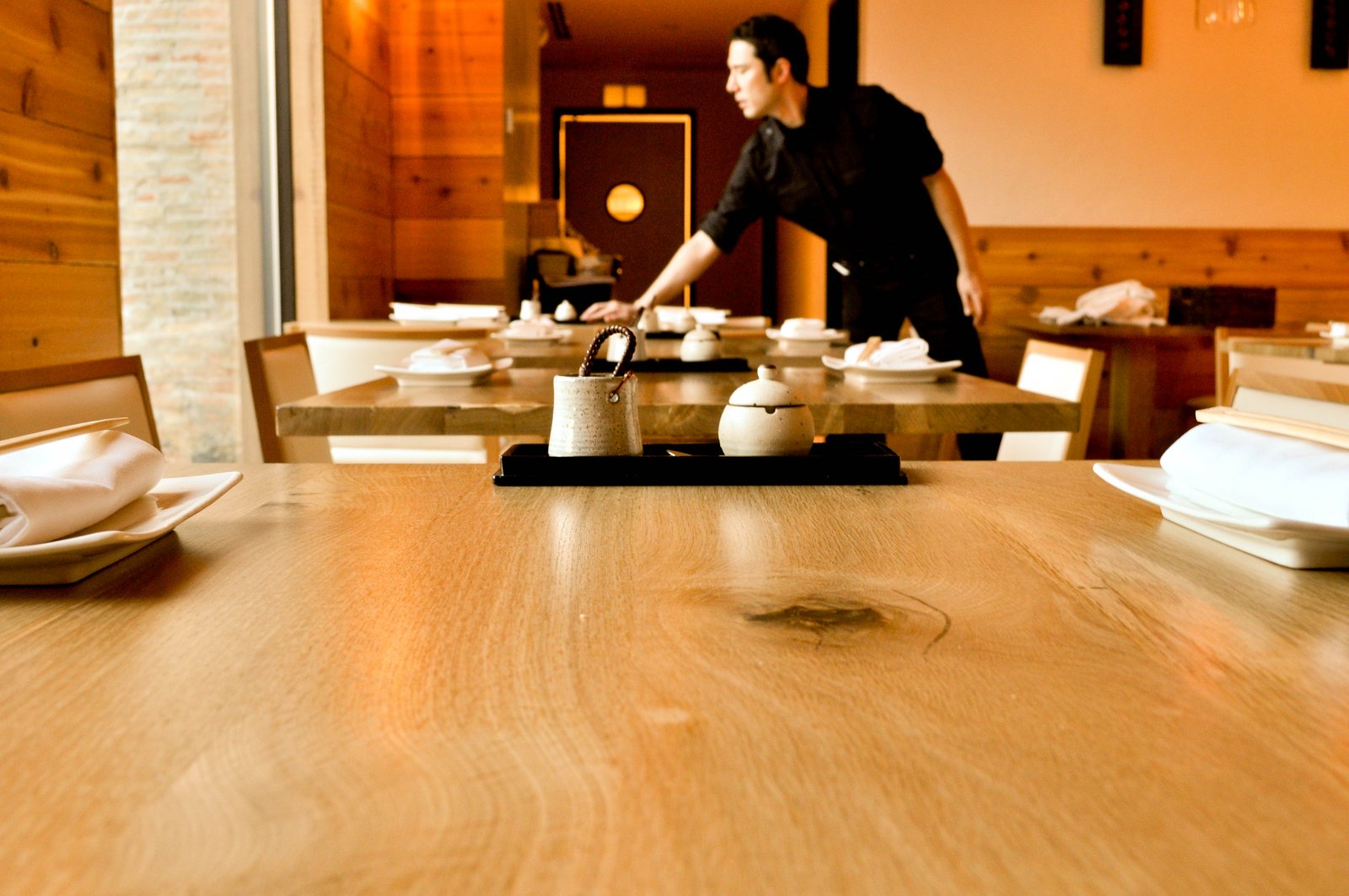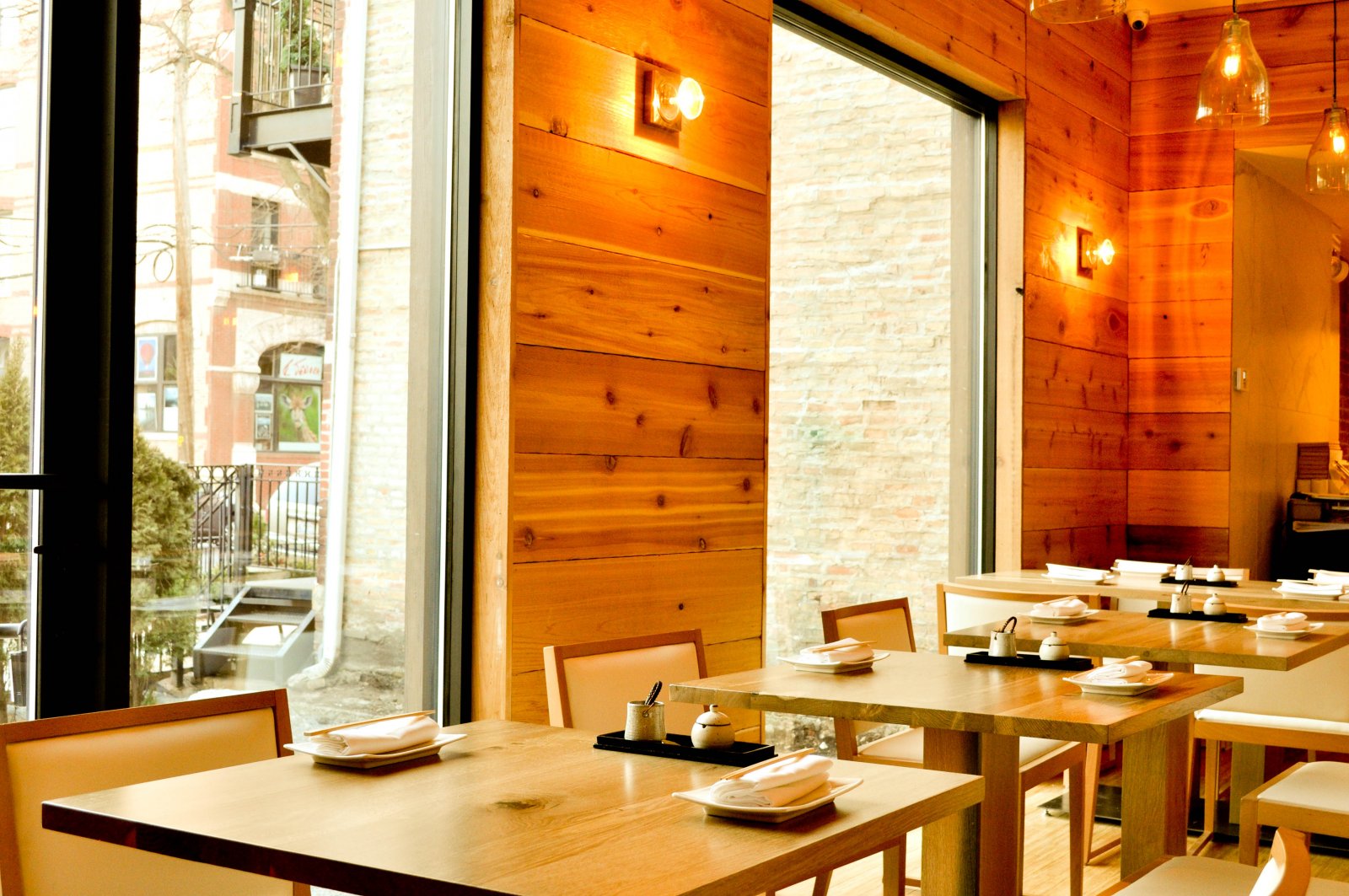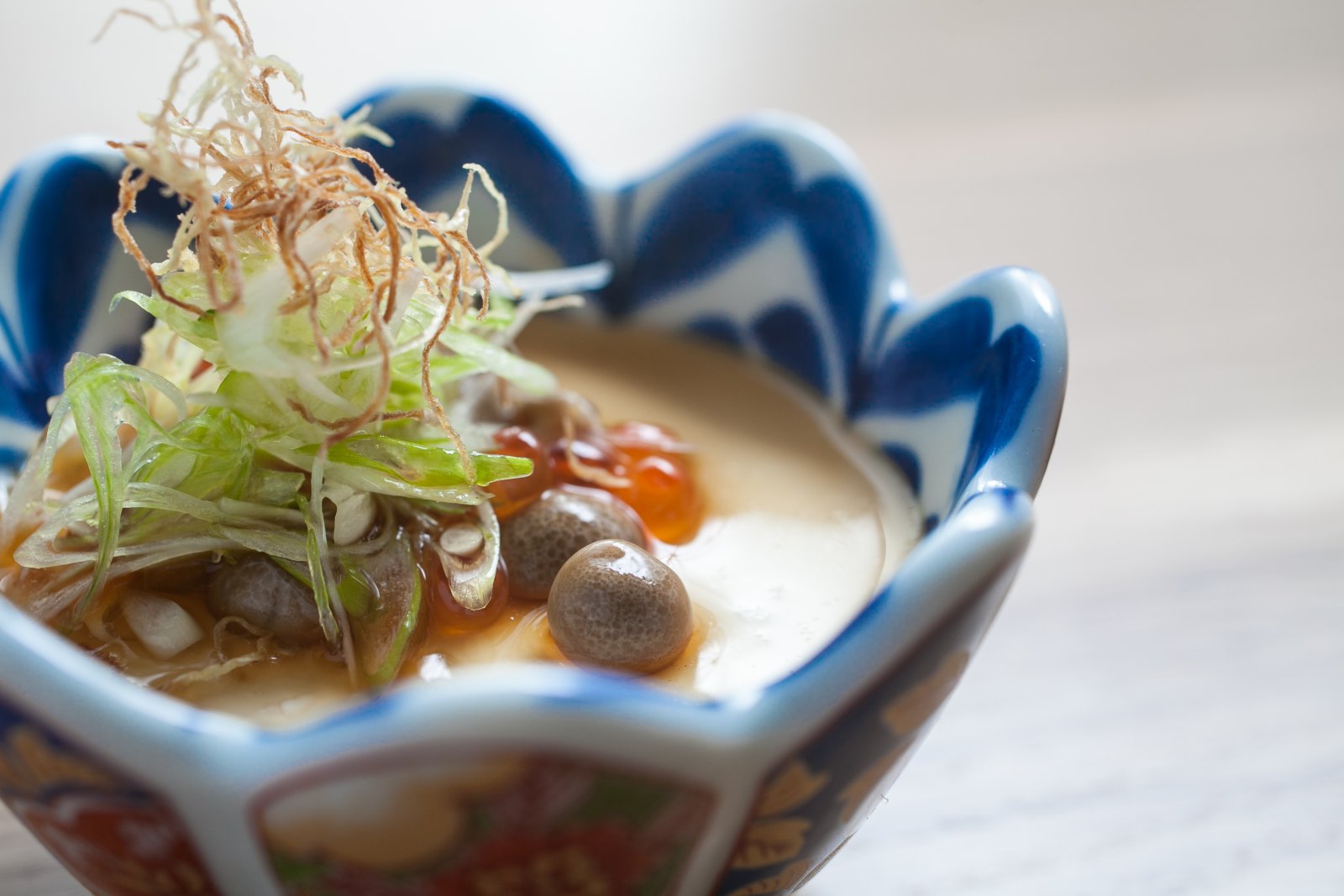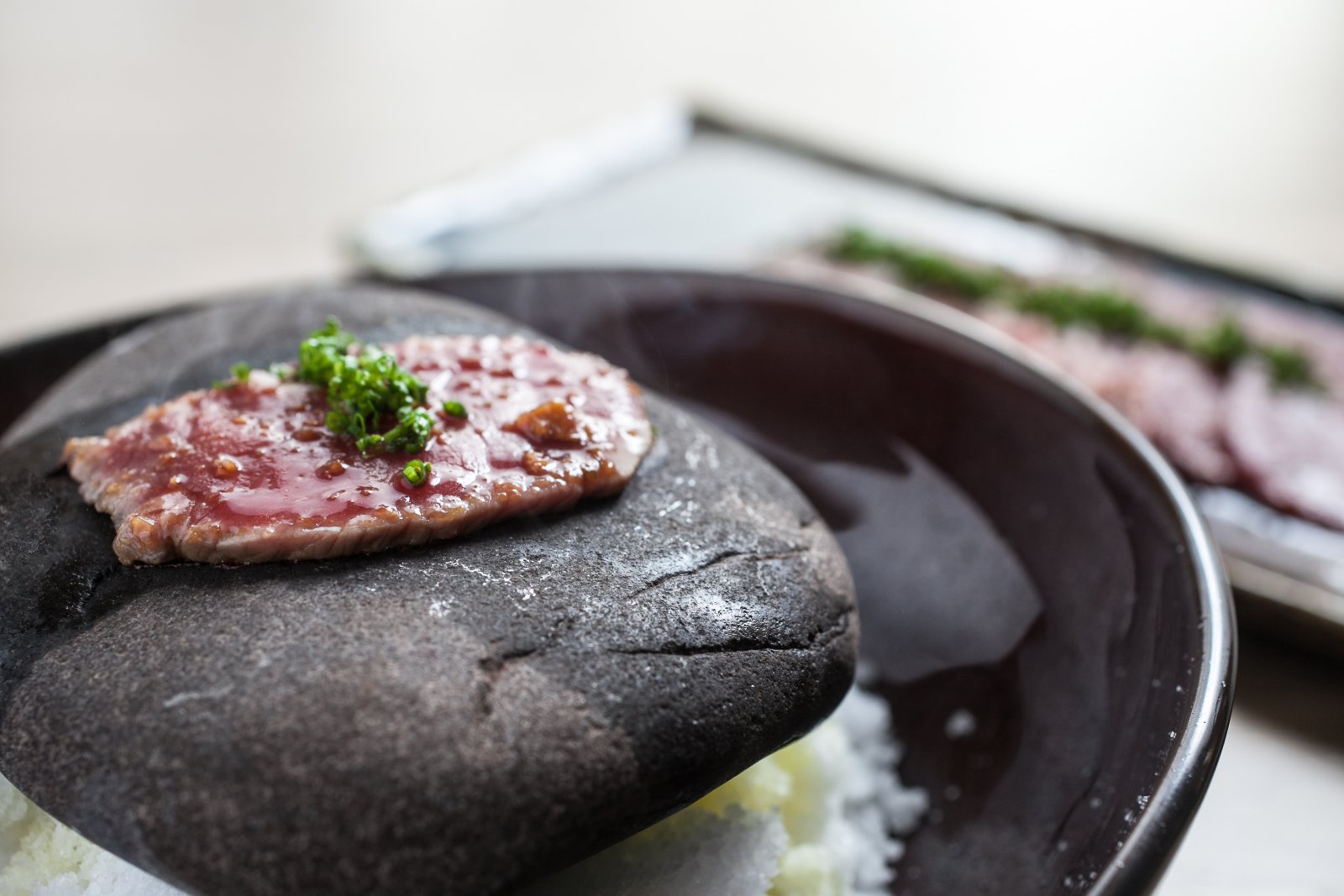Inside Chicago's Minimalist Gem Sumi Robata
Sumi Robata's chef and owner Gene Kato behind the glass and at the grill.
The passage to Sumi Robata's dining room is lined with the bar facing the open kitchen.
The sense of minimalism extends from the design to the plates to the presentation of dishes.
Tucked away in River North, Sumi Robata has the feel of quiet getaway — a lively neighborhood spot with a subdued aesthetic.
Kato's tofu dish is among the most popular dishes in the early going.
Meat eaters needn't worry though; beef sizzles on stone.
The idea was to emphasize sumi, or "charcoal." The first floor is based on the natural component of charcoal, which is wood. Charcoal Bar is based on the finished product, and utilizes black and dark gray colors
How did you source the wood and how many varieties are there? And can you also discuss the logs that are part of the wall behind the open kitchen?
The wood was sourced from Horigan Lumber. The restaurant uses oak, cedar and ash. In the kitchen, the logs serve as an accent piece to showcase a different angle of the wood.
What can you tell us about the exterior of the building and its design?
The outside is based on a kura design, or Japanese storefront.
The Charcoal Bar downstairs has a different dynamic and feel. Can you tell us about the different design elements down there, and what you were hoping to achieve?
I wanted to the downstairs to be dark, but warm. It still needed to be connected to the space so we burned 100 planks of wood to simulate the look of charcoal.
And the private dining room — what can you tell us about that?
It is called the "Tatami Room." This room is based on a traditional Japanese dining room.
What have been some of the most popular dishes at Sumi Robata so far?
Tofu, served chilled with caviar and crispy ginger; Jidori Karaage, a crispy fried chicken with shishito pepper paste; Gyutan, robata grilled beef tongue with sea salt; Donatsu, sansho-chocolate filled doughnuts with matcha mousse.
I noticed that the plating seems to fit the design of the restaurant in its understated elegance. What was your inspiration there?
For the customers to get a dish that was pure and unclouded by any other component.
Sumi Robata, 702 N. Wells, Chicago, IL, 312-988-7864, sumirobatabar.com

